Affiliate links on Android Authority may earn us a commission. Learn more.
Samsung Galaxy Note 2 vs Galaxy Note (original)
Published onAugust 29, 2012
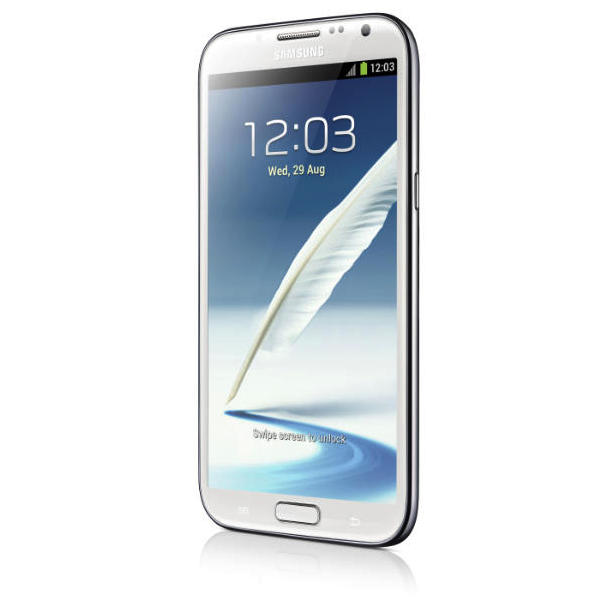
Ok, so the Samsung Unpacked event is now underway and the South Korean giant has finally officially announced the Galaxy Note 2 phablet, a device that has stirred the interest of the entire online tech media, as well as that of Android and Samsung fans from all around the globe. You can catch all the bits and pieces of information around the Galaxy Note 2 using the link here, or take a shot at winning a Galaxy Note 2 via our giveaway, but in the context of this VS article, it suffices to say that the Smartphone Santa wasn’t kind enough as to fulfill our Galaxy Note 2 wishlist!
Now that we’ve all seen what the Samsung Galaxy Note 2 is all about, I’ve noticed a few questions arise on everyone’s lips: how much better is the Galaxy Note 2 when compared against the original Note? Is upgrading from the original Note to the Note 2 a wise buying decision? We’ll answer all that and even more as we go through a thorough deathmatch between the original Galaxy Note and the Galaxy Note 2.
If you’re looking to compare the Samsung Galaxy Note 2 with more regular sized smartphones, don’t worry, we’ve got you covered as well! Follow these links for VS articles comparing the Note against the HTCOne X or against its smaller brother, the Samsung Galaxy S3.
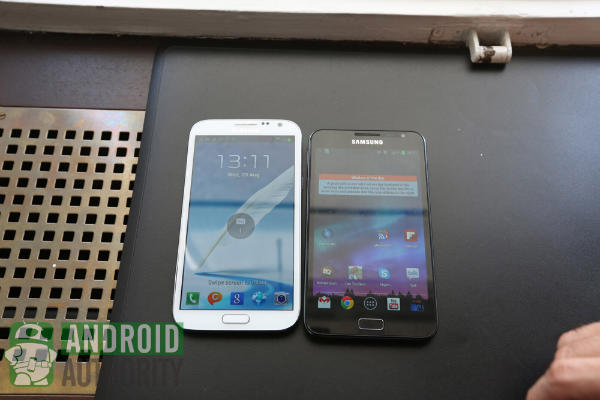
Display & Footprint
I don’t usually include the footprint as a main factor in VS articles and that’s mainly because a regular smartphone – that’s anywhere between 3.5 inches and 4.8 inches across the diagonal of the display (read more about the optimum size of a smartphone’s display) – is usually pocketable no matter how big the bezel is. And then there’s the fact that footprints are usually proportional with the size of the display.
But these articles should be nothing if not flexible by nature, so when comparing the original Galaxy Note against the Galaxy Note 2, the footprint becomes a major factor. And that’s because it’s almost the same with both smartphones, despite the fact that the Galaxy Note 2 has a display bigger by 0.2 inches than its predecessor. The original Note measures 146.9 x 83 x 9.7 mm, while the newly announced Galaxy Note 2 measures 80 x 151.1 x 9.4 mm.The Note 2 is also a couple of grams heavier than the original Note, weighing in at 180 grams.
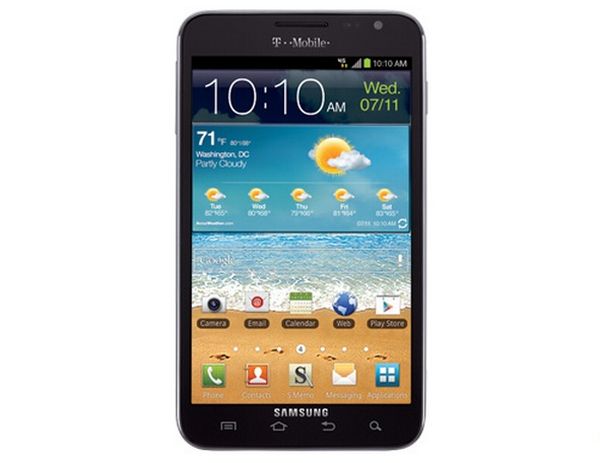
The original Samsung Galaxy Note features a 5.3-inch Super AMOLED display running at a native resolution of 1280 x 800 pixels, meaning you get a 285 PPI (Pixels Per Inch) ratio. Unfortunately, the only thing Samsung did with the display on the Galaxy Note 2 was to add an extra 0.2 inches to its diagonal, as the resolution remains the same (while the PPI ratio drops to 274 since the number of pixels is divided by a bigger surface).
Both displays use Samsung’s PenTile technology, meaning the subpixels are shared by adjacent pixels. At such densities, the differences between a PenTile display and one based on an RGB matrix (as are most displays) are barely visible to most people. Sure, take a look at these displays via a microscope and the differences are huge, but who would care about such a thing anyway? Those of you interested in Samsung’s position on PenTile displays should go ahead and read the article here.
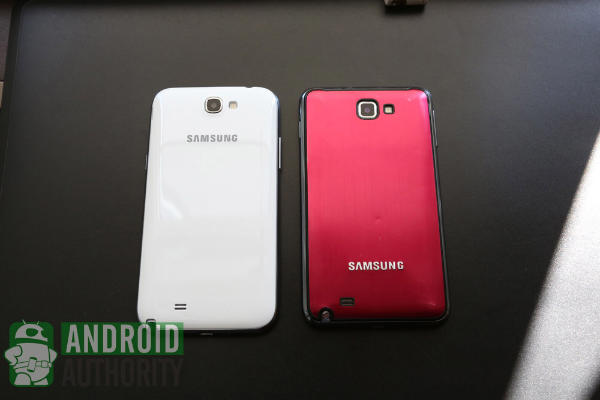
Verdict: As much as it surprises me, Samsung opted not to improve the display of the original Galaxy Note. It’s the exact same display, except it’s 0.2 inches longer. Considering that the phablet principle is really all about the display, I’m seriously disappointed, although I’m aware of the fact that this could have a lot to do with the S-Pen compatibility.
Internal Hardware
The international version of the original Note featured a 4210 System on a Chip (SoC), one that encapsulated both a 1.4GHz dual-core A9 processor and a Mali 400 GPU. On the other hand, the U.S. version, featured a lesser Qualcomm Snapdragon 8255T SoC, one that sticks together a 1.5GHz single-core Qualcomm Scorpion processor and an Adreno 205 GPU.
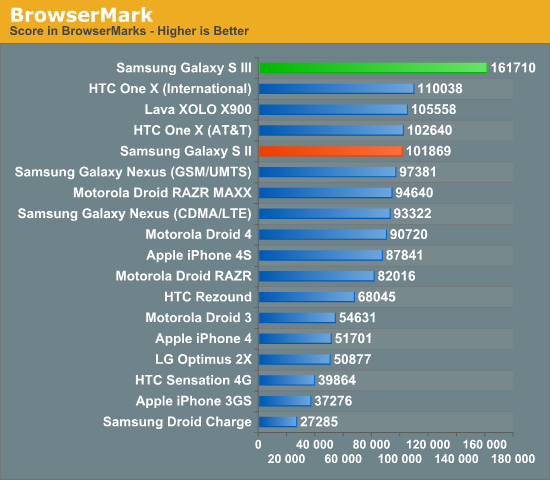
But while the differences between the two versions of the original Note are easily noticeable, the Galaxy Note 2 outperforms both of them by an even more significant margin, thanks to the overclocked Samsung Exynos 4412. Samsung also used the Exynos 4412 inside the international version of the Galaxy S3, but the quad-core processor inside the Note 2 was overclocked from 1.4GHz per core to 1.6GHz per core. The Mali 400 GPU is the same as inside the Galaxy S3, essentially an overclocked version of the Mali 400 GPU inside the original G Note.
The second incarnation of the Galaxy Note comes with 2GB of RAM, double the amount of RAM featured by the original Note. From the looks of it, all flagship smartphones scheduled to be released in the second half of the year will feature 2GB of RAM, and Samsung did not disappoint. Expect multitasking on the Galaxy Note 2 to be as smooth as it gets.
When it comes to the internal storage, Samsung has decided to make the Note 2 available in a 64 GB variant as well, besides the 16 GB and 32 GB variants that mirror the original Note. Additionally, while the original Note could handle microSD slots only up to 32 GB in size, the Note 2 can work with cards up to 64 GB in size. Sure, you’ll have to spend some extra cash to raise your total storage space up to 128 GB (64 GB internally plus 64 GB via the card slot), but it’s a good thing that it can be done, right?
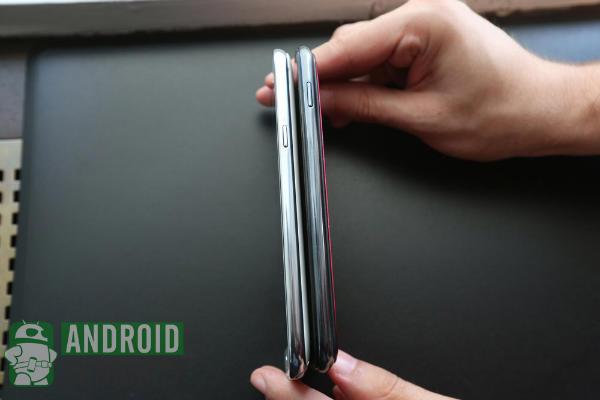
Unfortunately though, it is highly unlikely that the 3100 mAh battery on the Galaxy Note 2 will be able to yield better results than the 2500 mAh battery used in the original Note (with the quad-core Exynos CPU and slightly larger screen sucking more battery and al).
When it comes to cameras, the Note 2 looks to be identical to the original Note, both using an 8MP primary camera and a 2MP secondary camera. However, we’re unable to tell if these are the exact same sensors. We’ll update this article with picture samples as soon as we’ll have the opportunity.
Verdict: The Note 2 wins this round by a couple of lengths thanks to its faster, quad-core CPU and overclocked GPU.
OS & Software Tweaks
The first Galaxy Note was launched internationally back in October 2011, with Android 2.3 Gingerbread on board, and has started receiving (after quite a lengthy delay considering the status of the device) its Android 4.0 Ice Cream Sandwich update in July 2012. Since the original Note has just received its ICS update, I wouldn’t count on Samsung releasing an Android 4.1 Jelly Bean update for the first generation Galaxy Note anytime very soon.
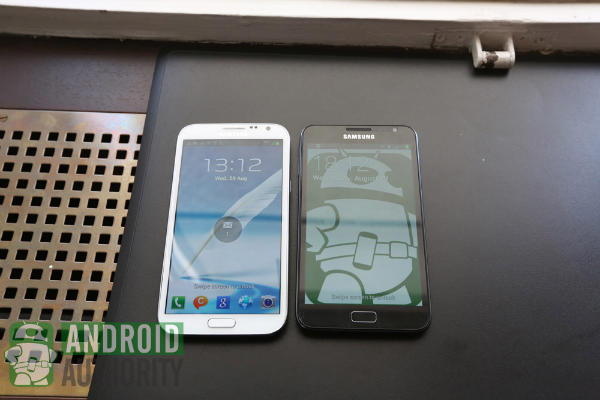
Now, on to the Galaxy Note 2, it pleases me to say that Samsung has finally stopped its tendency to release top-end flagships without the latest version of Android available. I’m honestly quite surprised to say this, but the Samsung Galaxy Note 2 will launch with Android 4.1:Jelly Bean pre-installed. The Android PDK project might have helped Samsung a bit, but the South Korean giant still gets my vote of confidence on this one.
The S Pen (the unique accessory that’s featured on all Samsung Note devices) has been redesigned and is now wider and longer, has a rubber tip to better simulate a pen and paper experience, and generally offers a better grip.
The Galaxy Note 2 uses all the smart functions that Samsung originally introduced with their Galaxy S3 (such as Smart Stay, Smart Alerts and such, read more about them in our previous article here). Obviously enough, the original Note has no such software tweaks. In addition, the Note 2 comes with several new features such as S-Pen Quick Commands, improved hand writing capture, a Screen Recorder that’s also able to record audio, as well as a software tweak that will alert you whenever the S-Pen is not in its holster (so that you don’t lose it).
Verdict: The Samsung Galaxy Note 2 wins this round thanks to Android 4.1 Jelly Bean and unique software functions.
Conclusion
While the Samsung Galaxy Note 2 is definitely better than its predecessor, the difference is basically limited to a better SoC, a slightly larger display (that maintains the resolution) and an improved S-Pen. Everyone is entitled to his own opinion, but I’d suggest that you don’t update to the Note 2 if you already own the original Note, unless you desperately want more processing juice.
In addition, if you own neither of these smartphones, the original Note might still represent a good buying decision, as its price will most likely drop once the Galaxy Note 2 becomes commercially available.
On the other hand, the Galaxy Note 2 features a larger display and much better CPU and GPU, Android 4.1: Jelly Bean, and an improved S-Pen. In addition, you should also consider that the Galaxy Note 2 should also receive a higher priority when it comes to future Android updates compared its predecessor.
What’s your take on this? Is the Galaxy Note 2 a substantial upgrade from the original Note? Or is it just Samsung’s way of begging for more money now that they’ve lost the patent war with Apple in the U.S.? Let us know what you guys think in the comment section below!